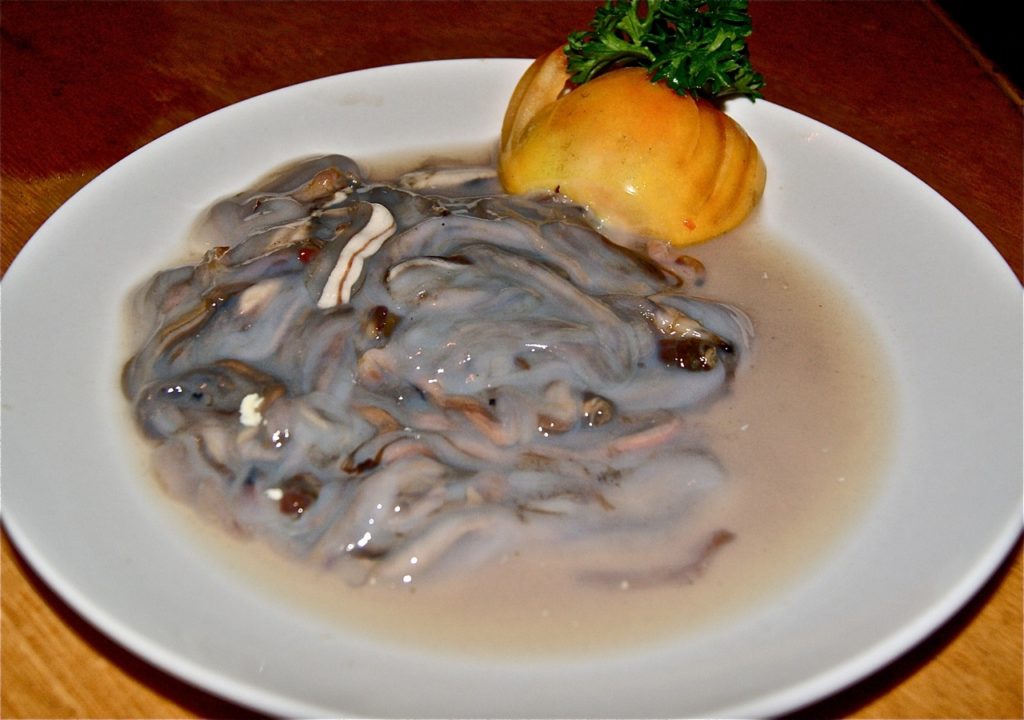The name ‘’Tamilok’’ is actually pronounced ‘’Tami – look’’ with the name deriving from the story of two American GI’s, back in World War 2, who were casually observing the way local Filipinos harvested Woodworms, which prompted the one GI to yell to the other “Tommy, look!”. Since then, the name stuck but we can’t say the love for this dish will go down as sweetly. The Tamilok Woodworm is a famous delicacy native to the Filipines, commonly found in rotten logs or thick tree trunks, which are decayed from being submerged under swamp like water. If the idea of eating worms freaks you out, then take heart as the Tamilok is actually considered part of the clam and oyster family. Tamilok has a fishy, slimy texture complimented by a very off-putting stench, which likely comes from the slick swamp riverbeds these worms live and breed in. It is not actually woodworm, but a mollusk that has teeth that are so powerful it can bite through metal, hardcore stuff right! Colloquially it is known as a woodworm though, because it is basically a worm that does eat wood.
The dish is served Either raw as a kinilaw which is a Filipino ceviche or they are deep-fried. Many of the top restaurants in Palawan serve it as a delicacy, but you will also see it being sold by hawkers on the beach. This dish was originally intended as a cheap easy street food. The foot-long (sometimes longer) slimy, grey creature has the qualities you’d expect from a delicacy: It’s a pain to find; is found in only a few countries, and is often eaten raw. First-time tasters describe the tamilok as “seawater that is made into jelly with a dash of oyster in it,” but locals say wala syang katulad (“it doesn’t taste like anything else”). Weirdly, no one even notices its two chisel-like teeth. Tamilok vendors typically serve the clams ceviche-style, called kinilaw. They prepare the entire animal raw, curing it in coconut vinegar and lime juice with chili and salt. Diners are recommended to swallow it whole. Good luck with that.















































